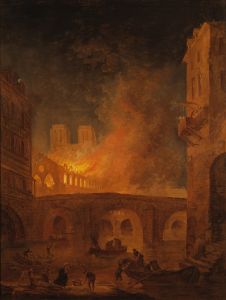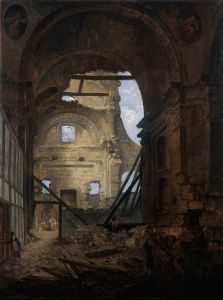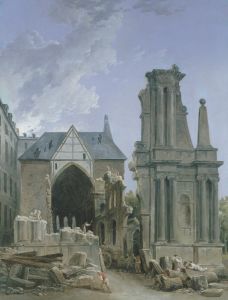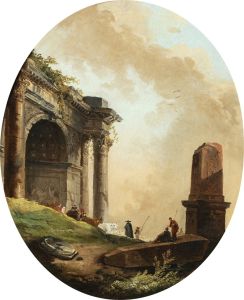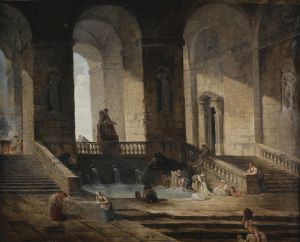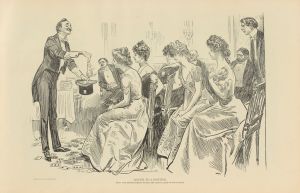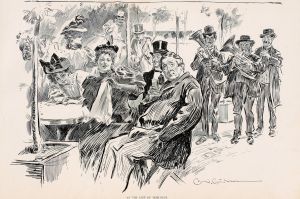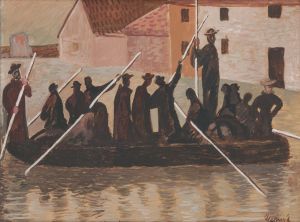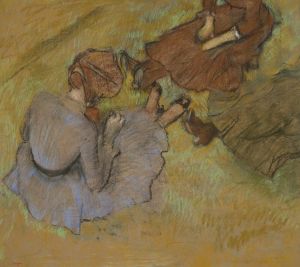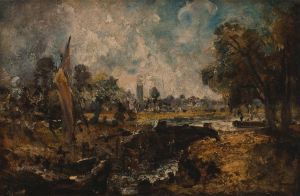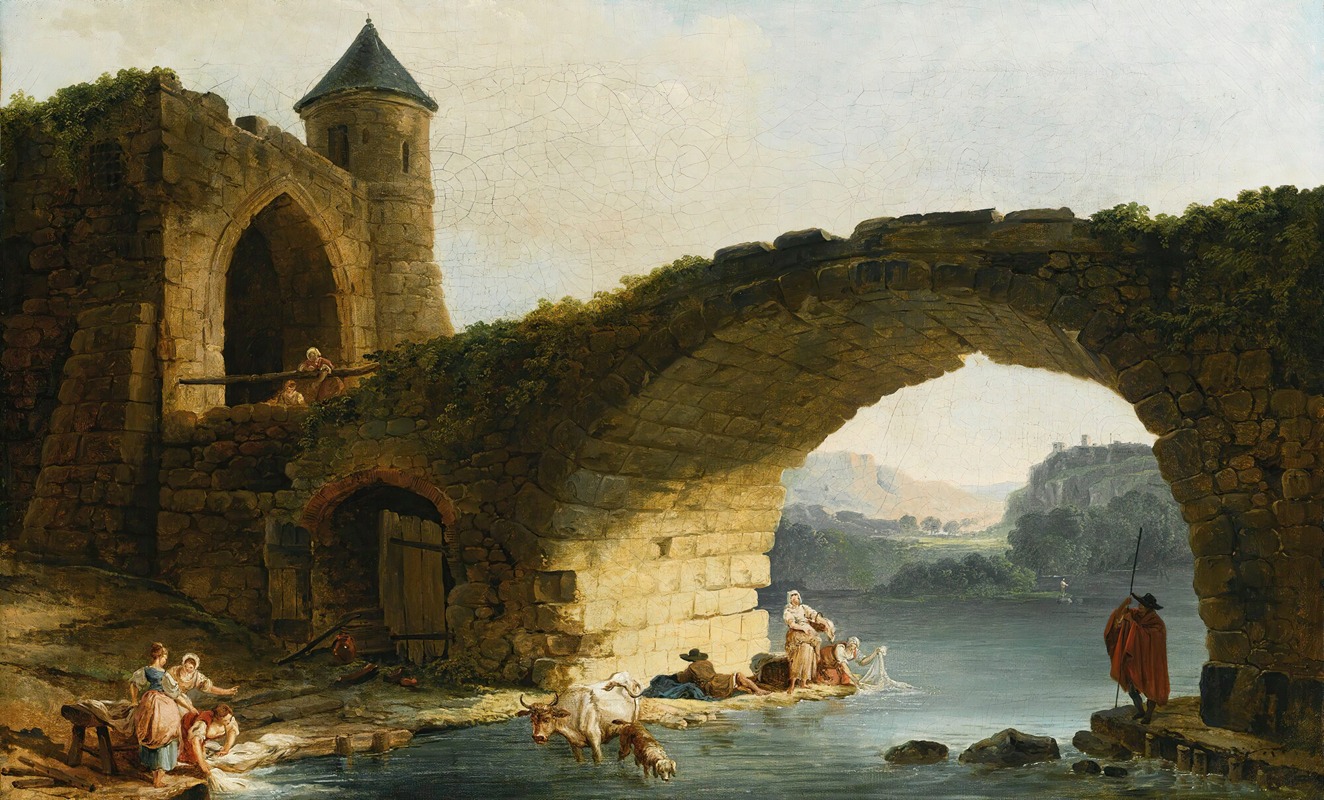
A Capriccio River Landscape With Washerwomen Near A Ruined Bridge
A hand-painted replica of Hubert Robert’s masterpiece A Capriccio River Landscape With Washerwomen Near A Ruined Bridge, meticulously crafted by professional artists to capture the true essence of the original. Each piece is created with museum-quality canvas and rare mineral pigments, carefully painted by experienced artists with delicate brushstrokes and rich, layered colors to perfectly recreate the texture of the original artwork. Unlike machine-printed reproductions, this hand-painted version brings the painting to life, infused with the artist’s emotions and skill in every stroke. Whether for personal collection or home decoration, it instantly elevates the artistic atmosphere of any space.
Hubert Robert's painting A Capriccio River Landscape With Washerwomen Near A Ruined Bridge is a work that exemplifies the artist's skill in combining elements of fantasy and reality to create evocative landscapes. Hubert Robert (1733–1808), a French painter, was renowned for his imaginative depictions of architectural ruins and pastoral scenes, often blending real and imagined elements to evoke a sense of nostalgia and timelessness.
This particular painting features a river landscape with washerwomen engaged in their daily work near the remnants of a ruined bridge. The scene is characteristic of Robert's style, which often included figures performing everyday tasks amidst grand, decaying structures. The juxtaposition of human activity with architectural ruins reflects the artist's fascination with the passage of time and the interplay between nature and human creations.
Robert was heavily influenced by his time in Italy, where he studied from 1754 to 1765. During his stay in Rome, he was inspired by the ancient ruins and the picturesque landscapes of the Italian countryside. These experiences profoundly shaped his artistic vision, and his works often incorporated classical architectural elements, such as arches, columns, and bridges, in various states of decay. While the specific location depicted in A Capriccio River Landscape With Washerwomen Near A Ruined Bridge is not identified, the painting aligns with the capriccio tradition, which involves the imaginative arrangement of architectural and natural elements to create an idealized scene.
The washerwomen in the painting serve as a humanizing element, grounding the composition in everyday life and providing a sense of scale to the monumental ruins. This inclusion of ordinary figures was a common feature in Robert's works, as it allowed viewers to connect with the scene on a personal level while also contemplating the grandeur and transience of human achievements.
Hubert Robert's ability to blend the real and the imaginary earned him significant recognition during his lifetime. He was appointed as a member of the French Royal Academy of Painting and Sculpture in 1766 and later served as the curator of the royal gardens at the Louvre. His works were highly sought after by collectors and continue to be celebrated for their poetic and atmospheric qualities.
A Capriccio River Landscape With Washerwomen Near A Ruined Bridge is a testament to Robert's mastery of composition, light, and texture. The painting captures the delicate balance between human activity and the enduring beauty of nature, inviting viewers to reflect on the impermanence of human endeavors and the enduring power of the natural world.






